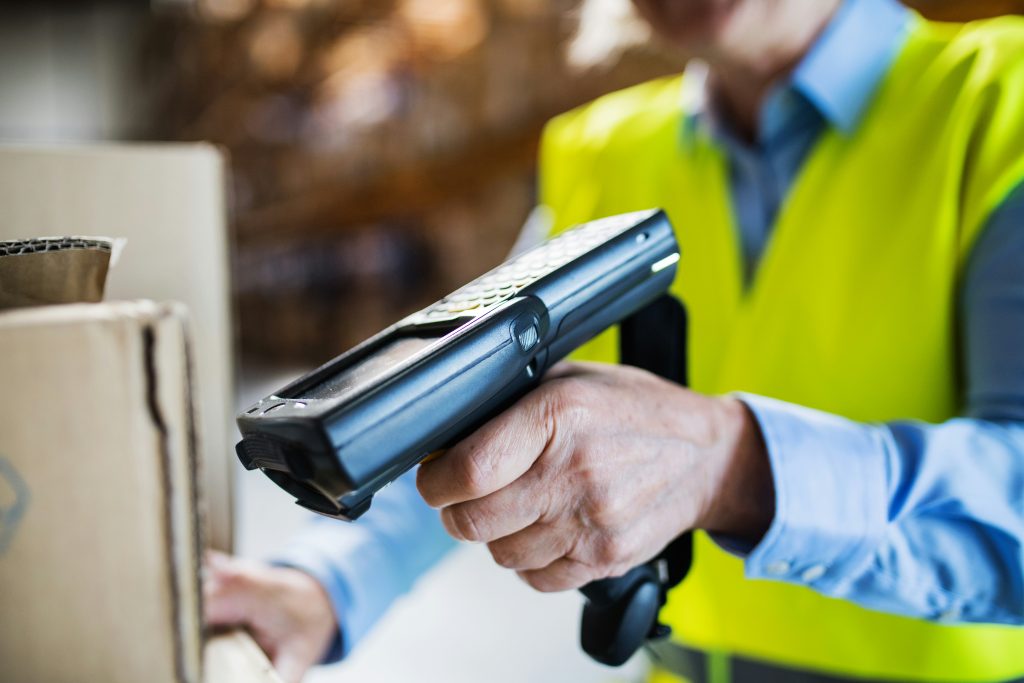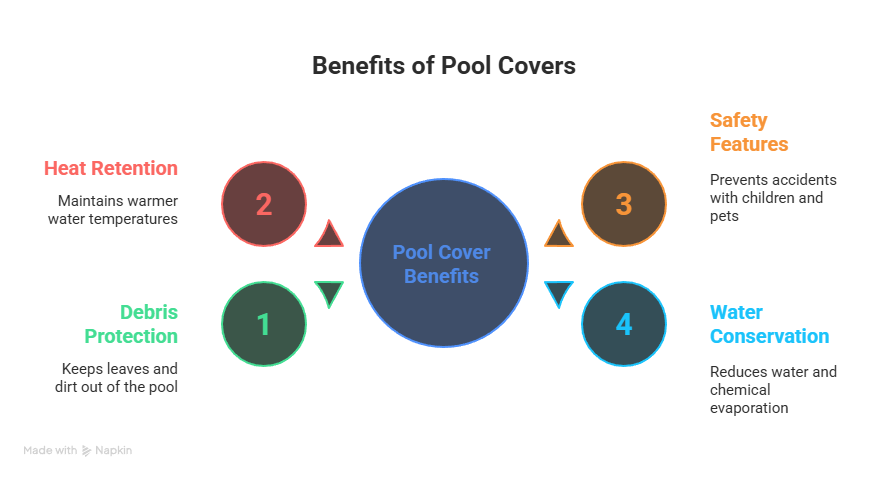-
Puerto Rico Vacations Are Known As Being the Best For Many Vacationers
If you are looking for a new and exotic place for a vacation then perhaps the beautiful islands in Puerto Rico could be the answer. The island of Puerto Rico is such a wonderful destination for every vacationers who are searching for that satisfying island trip that they can enjoy and also will not be too costly.
Many people these days are traveling to this island to view the large array of attraction and fine resorts that are plentiful there at the many Puerto Rico resorts. Puerto Rico vacations are becoming quite more popular among many vacationers.
The island of Puerto Rice is located about 1000 miles from southeast Florida, and is known for its very beautiful beaches, luxurious hotels and resorts, fine dinning, museums and some engaging shops. San Juan is located just on the north coast and it is there that many vacationers are encountering the eye catching colonial houses and churches along with several small plazas which have plenty of stores for some good shopping.
Also among the large variety of lodging options that are available to all tourist in the historical town are the great quality of the El Convento Hotel along with the homey gallery Inn. The old San Juan city also sports folk-art museums, like the Museo de Artes Poulares and also there are some very trendy restaurants like the La Bella Piazza and also the Parrot Club too.
The beautiful scenic route of Ruta Panoramica runs right between Puerto Rico’s west and east coast. Now over on the western coast you will find the city of Rincon which is near to the remote beach resort which is known as the Horned Dorset Primavera.
Just south of that resort you can wander throughout all of the quaint fishing villages and also the seaside towns as well such as Jojuda and also Boqueron and while you are there you will be able to visit some nice sites like the magnificent Cabo Rojo Lighthouse.
Also there is the lovely and wonderful city of Las Croabas, which you can find located on the eastern coast of the island. There you will find some nice and interesting features like the mammoth Wyndham El Conquistador Resort and also the Country Club.
If you are in need of any more information n regard to any accommodations or any type of tourist attractions and any recreational activities that you see offered throughout the island of Puerto Rico and their resorts you can simply go online and connect to the world wide web for a much more broad range of information in regard to all of the vacationing that you are interested in knowing all about for your next trip.
Puerto Rico can makes such a great and convenient place for a vacation for you and the whole family. It is quite good for an adventurous time and it is so convenient as the language used there is English.
-
London Love: Navigating Relationships When the Commute is a Killer
London, a city pulsating with life and opportunity, often demands a hidden cost from its residents: the daily commute. While the capital offers endless possibilities for career and social life, the relentless journey to and from work can quietly erode even the strongest relationships. If you’ve ever felt the drain of a long tube ride or the frustration of bumper-to-bumper traffic, you know exactly what we’re talking about. This isn’t just about lost time; it’s about lost energy, lost patience, and ultimately, a strain on your most cherished connections according to https://zomgcandy.com/balancing-life-and-love-how-online-dating-fits-into-your-lifestyle/.
The Hidden Cost of the Daily Grind
Let’s put it into perspective. According to a 2023 report from Transport for London, the average commuter spends an astonishing 84 minutes every single day just getting from one place to another. Think about that: almost an hour and a half, five days a week, is dedicated to travel. That’s not just a significant chunk of your day; it’s a massive drain on your overall energy reserves.
Imagine this: nearly two hours every weekday could be spent on so many other things. Instead of battling the Northern Line crowds or inching along the M25, you could be enjoying a leisurely breakfast with your partner, sharing stories about your day over a cup of tea, or simply offering a supportive presence when they need it most. That precious time, which could be nurturing your relationship, is instead consumed by the exhausting ritual of the commute according to https://eastendtastemagazine.com/discover-cultural-features-of-foreign-countries-traveling-and-dating/.
When Exhaustion Replaces Engagement
The impact of this daily strain often becomes glaringly obvious as soon as you step through your front door. It’s not uncommon for couples to arrive home after enduring a packed Jubilee line journey or a soul-crushing drive, only to find themselves short on temper and even shorter on patience. The vibrant, engaging person you want to be for your partner has been replaced by someone utterly depleted.
This strain often manifests at dinner, a time that should be for connection and conversation. Instead, both partners might be too exhausted to engage, opting for a weary silence rather than meaningful exchange. The frustration and weariness accumulated during the commute don’t magically disappear; they subtly seep into your home life, creating friction where there should be harmony. In a dating context, imagine trying to plan a spontaneous evening out or a romantic dinner when both of you are running on fumes from the day’s travel. The spark can quickly dim under the weight of sheer exhaustion.
Protecting Your Partnership in London
So, how do London couples navigate this unique challenge? The key lies in awareness and proactive strategies. Recognizing that your commute is a significant stressor on your relationship is the first step. From there, you can start implementing tactics to mitigate its effects.
Perhaps it’s about adjusting your work schedule to avoid peak hours, even if it means starting a little earlier or finishing a little later. Maybe it’s about using your commute time wisely – listening to a podcast together, planning your evening, or even just calling your partner for a quick chat to bridge the gap. For those in dating, being transparent about your commute and finding creative ways to spend quality time, even if it’s shorter bursts, can make a huge difference.
-
Events Companies: The Ultimate Guide to Professional Event Management
Events companies are professional organizations that handle all aspects of planning, organizing, and executing events. From corporate gatherings to product launches, these specialized firms provide the expertise, resources, and creativity needed to deliver successful and memorable experiences for clients and their guests.
Key Takeaways
- Professional events companies offer end-to-end solutions from planning to execution
- Different types of events companies specialize in areas like branding, technical production, and creative experiences
- South African excellence in outdoor branding includes locally manufactured products like parasols and banners
- Comprehensive management covers often overlooked services like venue selection and catering coordination
- The future of events management is being shaped by technology integration and data-driven planning
What Professional Events Companies Do: Complete Services and Solutions
Have you ever wondered what happens behind the scenes of a flawless event? Professional events companies work tirelessly to make sure everything runs smoothly.
Full-service event management means handling everything from the initial concept to the final cleanup. These companies take care of planning, coordination, execution, and troubleshooting – allowing you to focus on your guests and objectives.
The main benefits of hiring dedicated events companies include:
- Expert knowledge and industry connections
- Time and stress savings
- Creative input and fresh perspectives
- Access to specialized equipment and materials
- Risk management and problem-solving
When looking at events companies, you’ll find two main types. Specialized companies focus on specific aspects like branding or technical production. Comprehensive providers offer all services under one roof. Your choice depends on your event’s complexity and your internal resources.
Types of Events Companies in the Industry
The events industry includes several specialized providers:
- Outdoor Branding and Event Materials Specialists: Companies like Event Branding create visual identity elements such as banners, flags, and branded structures that make your event look professional and cohesive.
- Technical Event Management and Production Companies: Firms like The Events Guys handle the technical aspects including lighting, sound systems, and audio-visual equipment that create the perfect atmosphere.
- Creative Experience Designers and Activators: Companies such as JR Activate focus on creating innovative and engaging experiences that leave lasting impressions on attendees.
- Virtual and Hybrid Event Specialists: These experts provide platforms, streaming services, and interactive elements for online or combined in-person/virtual gatherings.
Each specialist brings unique expertise to ensure every aspect of your event receives professional attention.
Event Branding: The Foundation of Memorable Events
Event branding creates the visual identity that makes your event stand out. South African excellence in outdoor branding solutions is exemplified by companies that produce high-quality materials designed to withstand outdoor conditions while looking great.
High-quality materials form the backbone of effective event branding. These include:
- Parasols and umbrellas: Providing both branding opportunities and practical shelter
- Gazebos: Creating branded spaces for exhibitions or relaxation areas
- Banners and flags: Drawing attention and reinforcing brand identity
- Bar branding items: Extending your branding to refreshment areas
The importance of locally manufactured products deserves special mention. South African-made event materials offer several advantages:
- Support for the local economy
- Better quality control
- Faster delivery times
- Reduced environmental impact
- Products designed for local conditions
Vibrant colors and durable materials ensure that your branding remains impactful throughout your event, regardless of weather challenges.
Comprehensive Event Management Services
Professional events companies provide end-to-end coordination that takes your event from concept to successful conclusion. This comprehensive approach includes:
Setup to Execution: Complete event coordination involves initial planning, venue preparation, on-site management, and post-event breakdown. As The Events Guys highlight, professional teams handle the entire timeline, ensuring smooth transitions between phases.

Technical Production: Lighting and audio-visual equipment form the technical foundation of successful events. Professional companies provide:
- Sound systems tailored to venue acoustics
- Lighting design that enhances atmosphere
- Visual displays and projection systems
- Special effects when appropriate
Staffing Solutions: Behind every successful event is a team of professionals. Events companies provide:
- Experienced technicians to operate equipment
- Artists and performers to entertain guests
- Support personnel to ensure smooth operations
- Event coordinators to oversee all aspects
On-Site Management and Troubleshooting: Even with perfect planning, unexpected challenges can arise. Professional events companies excel at real-time problem-solving to ensure guests never notice when things don’t go exactly according to plan.
Creating Innovative Event Experiences
Innovation is what separates memorable events from forgettable ones. Companies like JR Activate pioneer creative approaches to event design that break the mold and create unique experiences for attendees.
As a “champion of innovation and diversity,” creative events companies push boundaries while ensuring that creative elements serve the event’s core objectives. This might include:
- Interactive installations that engage attendees
- Unexpected venue transformations
- Multi-sensory experiences that go beyond visual elements
- Technology integration that enhances rather than distracts
Balancing creativity with practicality is essential. The most successful events companies understand that while creative concepts attract attention, practical execution ensures satisfaction.
Breakthrough event experiences often reveal how seemingly simple creative choices can dramatically impact attendee engagement. For example, a product launch might use immersive storytelling rather than traditional presentations, leading to higher recall and social sharing.
Essential Services Often Overlooked in Event Planning
When planning events, certain critical services frequently get overlooked until they become urgent problems. Professional events managers anticipate these needs:
Venue Selection and Space Optimization: Finding the right venue involves more than aesthetics. Events companies consider:
- Capacity and layout flexibility
- Technical capabilities and limitations
- Accessibility and parking
- Permit requirements
- Weather contingencies for outdoor spaces
Catering Coordination and Dietary Accommodation: Food and beverage service requires specialized attention:
- Menu planning for diverse dietary needs
- Timing service around event programming
- Ensuring appropriate staffing levels
- Managing food safety and quality control
Entertainment Booking and Management: Professional entertainment adds value but requires careful management:
- Selecting appropriate performers for your audience
- Handling contracts and technical requirements
- Coordinating schedules and transitions
- Providing necessary support services
Transportation and Logistics Planning: Getting people and materials to and from your event smoothly is critical:
- Shuttle services between venues or from parking areas
- Equipment transportation and setup scheduling
- VIP transportation arrangements
- Contingency planning for transportation delays
Specialized Event Solutions for Different Industries
Different industries have unique event requirements. Professional events companies offer tailored approaches for:
Corporate Events and B2B Conferences: Business-focused events require attention to:
- Professional networking opportunities
- Content delivery and knowledge sharing
- Brand consistency and messaging
- Measurable business outcomes
Brand Experience Activations and Product Launches: Consumer-facing events focus on:
- Creating memorable brand interactions
- Generating social media sharing
- Driving product interest and trial
- Building emotional connections with consumers
Non-profit Fundraisers and Cause-Driven Events: These events balance celebration with purpose:
- Creating emotional connections to causes
- Facilitating donation opportunities
- Honoring supporters appropriately
- Maintaining cost efficiency
Virtual and Hybrid Event Frameworks: Digital components require specialized expertise:
- Platform selection and technical setup
- Engagement strategies for remote attendees
- Integration between in-person and virtual experiences
- Data collection and analysis
Key Differentiators When Choosing an Events Company
When selecting an events company, look beyond basic services to these key differentiators:
End-to-End Budget Management Capabilities: Superior events companies provide:
- Transparent pricing structures
- Cost-saving strategies
- Ongoing budget tracking
- Value optimization recommendations
Post-Event Analytics and ROI Measurement: Measuring success requires:
- Attendance and engagement metrics
- Participant feedback systems
- Goal achievement assessment
- Return on investment calculations
Sponsorship Acquisition and Management Strategies: For events seeking financial support:
- Sponsorship package development
- Prospect identification and outreach
- Sponsor relationship management
- Fulfillment tracking
Attendee Engagement Measurement Tools: Understanding participant experience through:
- Live polling and surveys
- Social media monitoring
- Interaction analysis
- Post-event follow-up
Emerging Trends in the Events Industry
The events industry continuously evolves. Current trends include:
Micro-Events for Targeted Departmental Engagement: Smaller, focused events that:
- Address specific departmental needs
- Create intimate networking opportunities
- Allow for more personalized content
- Reduce overall budget requirements
Personalized Follow-Up Systems Using Event Data: Sophisticated post-event engagement:
- Customized communication based on attendee interests
- Content sharing related to specific sessions attended
- Targeted next-step invitations
- Relationship development opportunities
Integrated Technical Support for Hybrid Experiences: As events bridge physical and digital spaces:
- Seamless platform integration
- Equal experience quality for all participants
- Real-time troubleshooting
- Multi-channel engagement options
Sustainability Practices in Event Production: Environmentally conscious approaches:
- Waste reduction strategies
- Digital alternatives to printed materials
- Local sourcing of materials and services
- Carbon offset programs
How to Select the Right Events Company for Your Needs
Finding the perfect events partner requires a systematic approach:
Defining Your Event Objectives and Requirements: Begin by clearly articulating:
- Primary and secondary goals
- Target audience characteristics
- Must-have elements and nice-to-have features
- Budget parameters and constraints
Evaluating Company Portfolios and Past Performance: Research potential partners by:
- Reviewing case studies and past work
- Speaking with previous clients
- Attending events they’ve produced if possible
- Assessing their experience with similar events
Understanding Pricing Structures and Value Propositions: Look beyond the bottom line to:
- What’s included vs. what’s additional
- Hidden costs and contingencies
- Payment schedules and terms
- Value-added services
Questions to Ask Before Signing a Contract: Crucial inquiries include:
- Who will personally manage your event?
- What’s their contingency planning process?
- How do they handle unexpected challenges?
- What does their typical timeline look like?
- How do they measure success?
The Future of Events Companies: Innovations on the Horizon
The events industry continues to transform through:
Technology Integration and Digital Transformation: Advancing through:
- Augmented and virtual reality experiences
- RFID and NFC technology for seamless interactions
- AI-powered personalization
- Automated scheduling and management tools
Data-Driven Event Planning and Personalization: Leveraging information for:
- Predictive attendance modeling
- Content customization based on participant profiles
- Real-time experience adjustments
- Measurable outcome improvements
Evolving Client Expectations and Adaptation Strategies: Meeting changing demands through:
- Greater sustainability commitments
- Increased flexibility in delivery models
- Enhanced health and safety protocols
- More immersive and participatory experiences
Predictions for Industry Development: Looking ahead to:
- Further blending of physical and digital experiences
- Increased focus on smaller, more frequent events
- Greater emphasis on measurable outcomes
- More sophisticated personalization capabilities
For comprehensive technical event production solutions, companies like Track It All and BW Productions offer specialized expertise for comperate events and other professional gatherings.
Conclusion
Professional events companies transform concepts into memorable experiences through specialized expertise in branding, technical production, and creative development. By understanding the different types of providers and services available, you can select the perfect partner to bring your event vision to life with minimal stress and maximum impact.
-
Navigating Love Across the Miles: Making Long-Distance Relationships Thrive in London and Beyond
Long-distance relationships (LDRs) present a unique set of challenges, especially when one or both partners are navigating the vibrant, often hectic, pace of life in London. While the city offers endless opportunities, it can also amplify the complexities of maintaining a connection when miles separate you. The key to making these relationships work isn’t just about enduring the distance, but about strategically nurturing the bond and making every moment count according to https://www.reveriepage.com/.
One of the biggest hurdles for couples in LDRs is coordinating schedules. Between demanding careers, social commitments, and personal obligations, finding overlapping free time can feel like a logistical nightmare. This is where smart planning becomes your best friend. Instead of trying to squeeze in hurried visits, look for opportunities that offer a more relaxed pace. Long weekends and school holidays are golden opportunities. These extended breaks allow you to truly unwind and immerse yourselves in each other’s company without the constant pressure of impending deadlines or early morning alarms. Imagine a leisurely bank holiday weekend exploring London’s hidden gems together, or a more extended trip that allows for deeper connection away from the city’s hustle and bustle according to https://www.thecoffeemom.net/how-to-bounce-back-to-dating-after-a-divorce/.
The focus should always be on quality over quantity. A short but well-planned visit can be far more fulfilling than a longer one filled with distractions and stress. Think about what brings you both joy. Is it exploring a new part of London, trying out a new restaurant, or simply enjoying a quiet evening in? Prioritizing meaningful activities ensures that even limited time together feels rich and memorable. This intentionality helps combat the feeling of lost time and reinforces the value of your connection.
To truly foster anticipation and maintain engagement, setting specific dates well in advance is crucial. Having a concrete plan on the calendar gives both partners something tangible to look forward to. It’s a shared goal that can inject excitement into your daily routines. Consider creating a joint calendar, perhaps a shared digital one, where you can both see the countdown to your next reunion. This visual reminder not only builds anticipation but also encourages ongoing communication. You’ll naturally find yourselves discussing plans for the upcoming visit, sharing ideas, and talking about what you’re excited to do together. This ongoing dialogue is vital for keeping the emotional connection strong and reminding you both that despite the distance, you’re still very much a team.
Maintaining a long-distance relationship requires dedication, creativity, and a healthy dose of realistic expectations. While the physical distance can be tough, the emotional connection can flourish with consistent effort. By strategically planning visits, prioritizing quality time, and fostering open communication, couples can not only survive the miles but thrive, making their unique dating journey a testament to their commitment, whether they’re meeting in the heart of London or across continents.
-
Moving’s Guide to a Smooth Move from Ohio to Florida
Moving from Ohio to Florida can feel overwhelming, but with the proper preparation, you can make the process easier. This guide will help you plan and execute your move with confidence. Whether you’re relocating for work, family, or a change of scenery, you can manage every step of the process.
Plan for Your Ohio to Florida Move
The first step in a smooth move from Ohio to Florida is planning. Give yourself enough time to organize everything. Aim to start preparing at least 6-8 weeks before your moving date. Here are a few steps to help you get started:
- Create a Moving Checklist: A checklist helps keep you organized. Write down all tasks and deadlines.
- Budget Your Move: Moving can be an expensive endeavor. Estimate costs for moving services, supplies, and other expenses.
- Hire Professionals Early: Professional movers can help with heavy lifting and transportation. Book them in advance to avoid last-minute stress.
Organize Your Belongings
Before the big move, go through your belongings and decide what to keep, donate, or sell. This will reduce the number of items you need to move and save you money.
- Sell Unwanted Items: Consider hosting a garage sale or listing your items on online marketplaces.
- Donate: Donate things you no longer need to charities or family members.
- Pack Smart: Use strong boxes for fragile items and label each box clearly.
Choose the Right Moving Company from Ohio to Florida

When moving across state lines, it’s essential to choose a reliable moving company. The right company will make the whole process much easier. Here’s how to select a good one:
- Research Moving Companies: Look for licensed and insured movers. Check their reviews and ratings online.
- Get Multiple Quotes: Contact a few moving companies for quotes. Compare their services and rates.
- Inquire About Their Experience: Ensure the company has experience with long-distance moves, particularly from Ohio to Florida.
Prepare for the Road Trip
If you’re driving to Florida yourself, make sure you’re prepared for the long journey. It’s a long drive, so plan carefully. Here are some tips:
- Check Your Vehicle: Make sure your car is in good condition. Get a tune-up and check the tires and oil.
- Plan Your Route: Map out your route and plan for overnight stops if necessary.
- Pack an Essentials Kit: Have a bag with snacks, water, toiletries, and essential documents.
Packing Tips for Ohio to Florida
Packing the right way can make a huge difference. You’ll want your belongings to arrive in Florida in good condition. Follow these tips:
- Pack Heavy Items First: Begin with heavier items, such as books and appliances. Pack these at the bottom of the boxes.
- Wrap Fragile Items Carefully: Use bubble wrap or towels to protect breakables.
- Label Your Boxes: Clearly label each box with the room it goes to and its contents. This will make unpacking much easier.
Florida Living: What to Expect
After the move, you’ll need to adjust to your new life in Florida. The state has a lot to offer, but it’s different from Ohio. Here are a few things to consider:
- Climate: Florida is warm year-round, so be prepared for the heat and humidity.
- Cost of Living: The cost of living in Florida is lower than in Ohio, but this depends on the area you choose.
- Insurance: Consider adjusting your car and health insurance policies, as rates may differ in Florida.
Tips for Settling into Florida
Settling into a new state can take time. Make sure to explore your new neighborhood and get to know the area. Here are some ways to adjust:
- Visit Local Attractions: Florida is known for its beaches and theme parks. Explore your surroundings and enjoy your new home.
- Meet New People: Join local groups or attend community events to meet others.
- Get Your Florida ID: Don’t forget to update your driver’s license and car registration when you arrive in Florida.
FAQ
1. How long does it take to move from Ohio to Florida?
It typically takes about 2-3 days to drive from Ohio to Florida, depending on your route and stops along the way. If you’re using a moving company, the time may vary based on their schedule and the distance.
2. What should I pack first when moving from Ohio to Florida?
Start by packing items that you don’t need immediately, like seasonal clothing, books, and decorations. Leave essential items, such as toiletries and clothes, for last.
3. Do I need to change my car insurance when moving to Florida?
Yes, car insurance rates and requirements can vary in Florida. Contact your insurance company to update your policy.
4. How can I save money on my move from Ohio to Florida?
You can save money by purging unnecessary items, packing yourself, and comparing quotes from different moving companies. Moving during the off-season can also lower costs.
5. What should I know about Florida’s weather before moving?
Florida’s climate is hot and humid, especially during the summer. Be prepared for afternoon thunderstorms and hurricane season, which runs from June to November.

Moving from Ohio to Florida can be a smooth process with careful planning and preparation. By hiring the right moving company, packing efficiently, and getting prepared for Florida’s weather and lifestyle, you can make your transition as stress-free as possible. With this guide, you’re well on your way to a successful move and a fresh start in the Sunshine State.
Buzzmoving partners with trusted movers across the country to offer exceptional moving services. Request a free quote today and find the perfect solution for your move
-
Keeping the Spark Alive Between Dates
Think of the time between dates as an opportunity to fan the flames of attraction. It’s not about grand gestures right away, but rather thoughtful touches that show you’re genuinely interested. A quick, funny text referencing an inside joke from your last meeting, or sharing a link to an article you know they’d appreciate, can keep the conversation flowing and demonstrate you’re thinking of them. These aren’t just messages; they’re little breadcrumbs of connection, building a sense of shared experience even when you’re apart. This consistent, lighthearted interaction is key in the early stages of dating, setting a foundation for a deeper relationship at according to https://lifemagazineusa.com/.
The Thrill of Surprise: London Date Ideas
Adding an element of surprise can significantly boost the excitement. Imagine hinting at a date, keeping the specifics under wraps until the last minute. This playful mystery builds intrigue and makes the eventual reveal even more impactful. For example, instead of just suggesting dinner, you could say, “I’ve got something fun planned for us in London this weekend – dress comfortably!” The anticipation of the unknown can be incredibly stimulating at according to https://www.monkeskateclothing.com/.
Consider a small, meaningful gift that speaks to their interests. Did they mention a favorite author? A rare edition of their book would be a lovely touch. Are they a music lover? Tickets to a band they adore, perhaps playing at a cozy London venue, would be a fantastic surprise. It’s these personal touches that truly resonate, showing attentiveness and that you value the budding relationship. One couple, for instance, turned the lead-up to their second date into a game of “date hints” through cryptic messages. This playful exchange culminated in a surprise hot air balloon ride over London – an unforgettable experience they still fondly recall. These moments of shared adventure and delightful surprises create lasting memories and strengthen your bond.
Deepening the Connection Through Conversation
While building anticipation for the next physical encounter is important, don’t underestimate the power of meaningful conversation in between. Ask open-ended questions that encourage them to share more about themselves. Share intriguing stories or anecdotes that might spark laughter or curiosity. These aren’t just fillers; they are opportunities to understand each other better, discover shared values, and build a sense of intimacy.
As your relationship progresses, move beyond superficial topics. Explore what truly matters to them – their passions, dreams, and values. This deeper level of communication fosters a profound bond, making each interaction feel more significant and enriching. It’s through these sustained, thoughtful exchanges that you genuinely get to know someone, moving beyond initial attraction to a more profound connection.
By consistently nurturing excitement, incorporating thoughtful surprises, and engaging in meaningful conversations, you’re not just going on dates; you’re building a strong foundation for a thriving relationship in the heart of London.
-
Why I Always Have Oneiric Shards Ready Before Each Star Rail Patch
If you’re like me, Honkai: Star Rail isn’t just another mobile game—it’s something you plan your week around. With updates dropping every six weeks and new 5-stars arriving like clockwork, being even a day behind can mean missing out on key event items, time-limited banners, or the final tier of a special pass.
It wasn’t always like this. For a while, I only topped up when I absolutely had to—and often found myself running out of Oneiric Shards at the worst possible moments. That changed when I found a faster, more affordable way to stay ahead.
A Smarter Way to Prepare
Every patch in Star Rail comes with urgency: countdown clocks, daily stamina, and limited-time reruns. I realized that scrambling to top up last-minute wasn’t helping. I’d either get hit with payment issues or lose time I could’ve spent farming gear or doing event runs.
That’s when I started using the Honkai top up center. Unlike other methods I’ve tried, this one was streamlined and surprisingly affordable. I just enter my UID, select a Oneiric Shards bundle, and it shows up in-game in less than two minutes. And since the process doesn’t require any login or verification step, it’s incredibly smooth.
Budget-Friendly and Reliable
One thing I’ve come to appreciate is just how cost-effective it is. Without needing discount codes or waiting for special promos, the prices are already lower than expected—especially on bigger bundles like the 3280+600 pack or the 6480+1600. That extra savings let me pick up an Express Supply Pass a few times without going over budget.
And honestly, Manabuy just makes the whole thing feel easy. I don’t get hit with surprise taxes or confusing pop-ups. I know what I’m buying, how much it costs, and when it’ll show up. That reliability has made it part of my regular gaming routine.

Why It’s Part of My Monthly Ritual
These days, I treat Manabuy like a part of my pre-patch checklist. Before new banners or events roll out, I check my shard count, see what’s coming, and top up in advance if needed. I usually keep a few thousand Oneiric Shards ready—enough to soft pity a character or cover a Light Cone if luck’s not on my side.
It’s a small habit that’s saved me time, money, and frustration. No more scrambling to pull just hours before a banner ends or worrying about whether a payment will process in time.
Final Thoughts
Honkai: Star Rail is a game that rewards timing and planning. When your pulls matter and your window to act is tight, it helps to have the right resources ready to go. For me, using the Honkai top up center has become the easiest and most reliable way to do just that.
It’s fast, clear, and built around what players actually need. If you’re tired of delays or just want to make your prep work a little more efficient, it’s definitely worth checking out.
-
Love in the Open Air: Unforgettable Outdoor Date Ideas in London
London, with its vibrant energy and rich history, often conjures images of bustling streets, iconic landmarks, and cozy pubs. But for those looking to deepen a connection or spark a new one, the city also offers a wealth of breathtaking outdoor spaces perfect for memorable dates. If you’re navigating the exciting world of dating in London, moving beyond the typical dinner-and-a-movie can truly set the stage for a unique and engaging experience. After all, a change of scenery, especially one as beautiful as London’s parks and waterways, can do wonders for fostering a genuine relationship according to https://www.reveriepage.com/.
Glide and Connect on the Thames River Cruise
Imagine this: you and your date, bathed in the soft glow of the setting sun, gently gliding along the historic River Thames. A Thames River Cruise isn’t just a sightseeing tour; it’s an incredibly romantic and immersive experience. As the boat gracefully navigates the water, London’s most iconic landmarks—the majestic Tower Bridge, the towering Shard, and the dazzling lights of the London Eye—drift by like a living postcard according to https://www.thecoffeemom.net/how-to-bounce-back-to-dating-after-a-divorce/.
The sheer beauty of the surroundings creates an immediate, relaxed ambiance. The gentle motion of the water and the ever-changing panorama provide natural conversation starters, easing any first-date jitters. You’ll find yourselves pointing out sights, sharing observations, and discovering common interests as the city unfolds around you. This unique perspective of London not only offers fantastic photo opportunities but also encourages a deeper, more relaxed interaction. The backdrop of historical architecture and modern marvels provides a sense of grandeur, making every moment feel special and fostering a connection that goes beyond surface-level chatter. It’s the kind of date that feels both grand and intimate, laying a beautiful foundation for a budding relationship.
A Botanical Escape at Kew Gardens
For those who appreciate nature’s artistry and seek a tranquil escape from the urban buzz, a visit to Kew Gardens is an absolute must. This UNESCO World Heritage site is far more than just a collection of plants; it’s a living, breathing paradise that engages all the senses. Walking hand-in-hand through its vast expanses, you’ll be enveloped by the vibrant colors of countless flowers, the calming rustle of leaves, and the fragrant scent of exotic blooms.
Kew’s diverse landscapes offer endless opportunities for exploration and quiet conversation. Stroll along winding paths, discovering hidden corners and grand vistas alike. From lush, manicured lawns perfect for a leisurely picnic to serene lakes reflecting the sky, there are countless picturesque spots to pause, sit, and truly connect. The sheer variety of botanical wonders—from towering redwoods to delicate orchids in the glasshouses—provides a constant stream of awe and wonder, sparking engaging dialogue.
Feeling a bit more adventurous? Ascend the Treetop Walkway, a thrilling aerial pathway that offers breathtaking panoramic views above the garden canopy. This unique perspective allows you to appreciate the vastness and beauty of Kew from a different angle, creating a shared experience that’s both exhilarating and memorable. A date at Kew Gardens is an opportunity to slow down, breathe in the beauty of nature, and cultivate a deeper bond in a truly enchanting setting. It’s an ideal choice for nurturing a new relationship or rekindling the spark in an existing one, proving that some of the best dating in London experiences are found outdoors.
-
Love Across Continents: Navigating Cross-Cultural Relationships in London
In the vibrant, multicultural heart of London, a unique and increasingly common phenomenon is unfolding: the flourishing of cross-cultural relationships. Imagine a tapestry, not just of threads, but of entire cultures, woven together to create something breathtakingly rich and complex. This isn’t just about two people falling in love; it’s about two worlds, two sets of traditions, and two distinct ways of seeing the world, merging into a single, beautiful narrative. As anyone who has embarked on this journey will tell you, a cross-cultural relationship is an adventure in itself, brimming with discovery, challenge, and ultimately, profound growth according to https://eastendtastemagazine.com/discover-cultural-features-of-foreign-countries-traveling-and-dating/.
London, with its kaleidoscope of nationalities and ethnicities, provides the perfect backdrop for these connections to blossom. Walk through its bustling markets, ride its iconic red buses, or simply sit in a park, and you’ll witness countless couples whose backgrounds span continents. From the quiet corners of Hampstead Heath to the lively streets of Shoreditch, love is transcending geographical and cultural boundaries, proving that the human heart knows no borders according to https://www.reveriepage.com/.
The initial spark in any dating scenario is often an undeniable chemistry, but in a cross-cultural relationship, that spark is quickly followed by a fascinating cultural exchange. Suddenly, you’re not just learning about your partner’s likes and dislikes; you’re delving into their family history, their national identity, and the subtle nuances of their upbringing. This can manifest in countless ways. Perhaps your partner’s concept of personal space is vastly different from your own, or their family’s expectations around courtship and marriage diverge significantly from what you’ve experienced. The way holidays are celebrated, the significance of certain foods, or even the underlying communication styles can vary dramatically. One partner might come from a culture where direct communication is valued, while the other might prefer a more indirect and nuanced approach.
Consider the simple act of celebrating a holiday. For one partner, Christmas might involve elaborate family gatherings, carols, and a traditional roast. For the other, a significant celebration might revolve around Diwali, Eid, or Chinese New Year, with their own unique rituals, foods, and familial dynamics. Instead of these differences being points of contention, they become opportunities for shared learning and deeper appreciation. Imagine introducing your British partner to the vibrant colors and joyous sounds of a Diwali celebration, or your partner from Mumbai experiencing their first traditional Christmas dinner with all the trimmings. These shared experiences, though initially unfamiliar, become cherished memories that enrich the relationship’s foundation.
The beauty lies in the willingness to embrace these differences, not just tolerate them. It requires an open mind, a curious spirit, and a healthy dose of patience. Misunderstandings are inevitable, but they serve as stepping stones towards greater understanding. It’s about asking questions, listening intently, and being prepared to adjust your own perspectives. In a London pub, you might find a couple discussing the complexities of their families’ differing views on financial independence or the role of elders in decision-making. These conversations, though sometimes challenging, forge a deeper bond built on mutual respect and empathy.
Moreover, cross-cultural relationships often foster a remarkable degree of personal growth. You become more adaptable, more empathetic, and more globally aware. You might find yourself learning a new language, trying new cuisines, or even re-evaluating your own deeply ingrained beliefs. This expansion of your own world view is an invaluable gift that these relationships offer. It pushes you out of your comfort zone and encourages you to see the world through a broader, more inclusive lens.
Ultimately, navigating a cross-cultural relationship in a city like London is a testament to love’s incredible power to bridge divides. It’s a journey of continuous discovery, where every day brings a new lesson and a deeper appreciation for the rich tapestry that is your shared life. It’s a powerful reminder that while our backgrounds may differ, the fundamental human need for connection, understanding, and love remains a universal language, spoken fluently across all cultures. These relationships, complex as they may be, offer a unique and profoundly rewarding path to love, proving that when it comes to matters of the heart, difference truly can be a strength.
-
Planning the Perfect Maui Beach Day Just Got Easier

Maui’s Beaches Are Stunning—and Crowded
If you’re dreaming of soft sand and a quiet, shaded spot under a palm tree, you’re not alone. That’s exactly what thousands of other tourists are also trying to lock down the moment they arrive.
Popular beaches like Ka’anapali, Big Beach in Makena, and Kapalua Bay fill up fast. Not only is parking limited, but the best shaded areas are claimed early. Without the right gear, like a beach umbrella rental or beach chair rental in Maui, you could end up baking in the sun or sitting uncomfortably in the sand for hours.
What Most Travelers Forget to Pack
Let’s face it—no one wants to pack snorkels or boogie boards into their suitcase. And renting them after you arrive? That’s when the chaos begins. Stores are picked over, prices are high, and inventory is often limited during peak season.
That’s why savvy travelers are now turning to Maui beach gear rentals. From snorkel rental in Maui to boogie board rentals, the best independent companies on the island offer quality gear delivered right to your rental, resort, or even your favorite beach.
Want a full setup with chairs, umbrellas, coolers, and even beach carts? Maui beach equipment rentals have become a go-to solution for families and couples who want to skip the hassle and enjoy their vacation the right way—from day one.

The Secret to Finding the Best Boogie Boarding in Maui
If you’re searching for the best boogie boarding in Maui, head to spots like DT Fleming Beach or Kamaole Beach Park III. But before you hit those waves, you’ll need a board—and probably a backup plan if the surf isn’t ideal.
Instead of searching the island for rentals after you arrive, pre-booking boogie board rentals in Maui through a trusted local provider lets you get straight to the fun. Many of these businesses will even give you tips on the best beaches for the current conditions, helping you avoid wasted trips.
Don’t Forget the Food
You’ve got your beach chairs, your snorkel set, and your umbrella—but what about lunch?
Food trucks and resort restaurants aren’t always available nearby, and if you’re deep into a beach day with kids or a big group, leaving to find food can kill the vibe. That’s where food delivery in Maui makes a big impact.
Several independent businesses now offer fresh, local food delivery right to the beach or your vacation rental. Whether it’s a cooler packed with fruit and sandwiches or a full meal with drinks and desserts, you’ll spend less time driving around and more time enjoying paradise.

Convenience, Delivered
What makes this all work is delivery. You don’t need to stand in line at a shop or worry about returning gear by a deadline across town. Independent Maui businesses offering beach gear rentals, umbrella rentals, and snorkel rentals will drop off everything you need—and pick it up when you’re done.
Planning ahead also means you can guarantee availability, avoid inflated last-minute pricing, and take advantage of package deals.
Want to schedule everything to arrive the day you land? Many companies deliver directly to your resort or Airbnb. Some even offer contactless service, so you can hit the beach as soon as your flip-flops hit the sand.
Support Local, Skip the Stress
Beyond convenience, pre-booking with local businesses helps the island community. These aren’t national chains—they’re Maui locals who know the beaches better than anyone and take pride in helping visitors have unforgettable experiences.
By supporting local, you not only get better service and more flexible options, you also get insider recommendations on where to snorkel, where the best beach for your kids is, and which beaches are too windy that day.

Final Thoughts: Don’t Leave It to Chance
If you’re flying into Maui and planning to spend time on the beach (and really, who isn’t?), take this tip from experienced travelers: book your beach gear and food delivery before you even land.
Look for trusted providers offering:
- Maui beach equipment rentals
- Maui beach gear rentals
- Beach chair rental Maui
- Beach umbrella rental
- Snorkel rental Maui
- Boogie board rental Maui
- Food delivery Maui
It’s the easiest way to make sure your vacation starts stress-free and stays that way. No fighting crowds, no last-minute dashes to a beach shop—just you, your family, and the best beach day ever. Ready to skip the chaos and enjoy Maui like a local? Plan ahead, reserve early, and relax knowing everything you need will be waiting when you get there.
-
Beyond Reservations: London’s Hidden Gems for Romantic Connections
London, a city synonymous with bustling energy and iconic landmarks, also holds a secret for those seeking intimate moments: its hidden gem restaurants. Forget the well-trodden tourist paths; true romance in this vibrant metropolis often blossoms in the quiet corners of South London, where culinary delights and enchanting atmospheres conspire to create unforgettable dating experiences. These aren’t just places to eat; they’re stages for deepening connections, sparking conversations, and weaving shared memories according to https://zomgcandy.com/balancing-life-and-love-how-online-dating-fits-into-your-lifestyle/.
South London, with its eclectic neighborhoods, offers a treasure trove of dining spots perfect for a romantic evening. Take Maremma in Brixton, for instance. Stepping inside feels like being welcomed into a Tuscan home. The warmth of the ambiance perfectly complements their authentic Italian dishes, which are a testament to homemade goodness. Imagine sharing plates of their exquisite handmade pasta, each bite a delicate dance of flavors, or indulging in a rich, velvety tiramisu together. These shared culinary journeys transcend a mere meal; they become moments of connection, quiet appreciation, and shared joy that linger long after the last spoonful. It’s in these settings that relationships can truly flourish, built on shared laughter and the simple pleasure of good food in good company according to https://eastendtastemagazine.com/discover-cultural-features-of-foreign-countries-traveling-and-dating/.
Another exceptional find is The Ivy House in Nunhead. This isn’t just a pub; it’s a journey back in time. Its old-world charm, complete with cozy nooks and soft lighting, sets an undeniably romantic tone. Here, whispered conversations over candlelight take on a special intimacy. The gentle hum of happy patrons and the historic decor create a sense of seclusion, allowing couples to truly focus on each other. When planning a date at either of these London havens, a little foresight can go a long way. Making reservations in advance, especially for a window table, can elevate the experience even further, offering a picturesque backdrop to your romantic encounter.
But romance in London extends beyond just dining. A truly memorable date, one that strengthens a relationship, often involves a blend of experiences. Why not couple a delectable meal with a dose of art and culture? Before heading to Maremma, perhaps a visit to the Saatchi Gallery in Chelsea, offering contemporary art that can spark engaging discussions. Or, before your evening at The Ivy House, a stroll through the serene Dulwich Park could provide a beautiful prelude, allowing for quiet conversation and hand-holding. These shared cultural moments, followed by an intimate dinner, create a holistic dating experience that appeals to both the senses and the intellect.
Ultimately, London’s hidden culinary gems offer more than just delicious food; they provide the perfect canvas for crafting meaningful romantic experiences. They encourage intimacy, foster connection, and create lasting memories, proving that sometimes, the most profound relationship moments are found not in grand gestures, but in the quiet, shared beauty of a hidden gem restaurant in a vibrant city.
-
Budget-Friendly Romance: Dating in London Without Breaking the Bank
London, a city synonymous with grandeur and, let’s be honest, often a hefty price tag, might not immediately spring to mind when you’re thinking about budget-friendly dating. However, this vibrant metropolis is brimming with opportunities for romance that won’t empty your wallet. Forget the notion that memorable dates require extravagant spending; in London, it’s about embracing the city’s unique charm and making the most of its incredible free and low-cost offerings. For couples navigating the dating scene, or those looking to strengthen an existing relationship, London provides a surprising array of delightful and affordable experiences according to https://postmaniac.com/.
One of the most iconic and relationship-enhancing activities is a stroll along the River Thames. Specifically, the South Bank offers a dynamic backdrop for connection and discovery. As you wander hand-in-hand, you’ll be serenaded by talented street performers, adding a spontaneous soundtrack to your date. The air is often filled with the tempting aromas from various food stalls, many of which offer delicious and surprisingly wallet-friendly treats. Sharing a churro or a savory pastry as you gaze across the river at the city skyline can be incredibly intimate and far more memorable than a formal, expensive meal. Keep your eyes peeled for impromptu pop-up events featuring local artists or musicians. These unexpected cultural encounters create an immersive and exciting atmosphere, fostering shared appreciation and sparking conversation. These shared, spontaneous experiences have a unique way of deepening a connection, making your outing truly unforgettable according to https://needlycare.com/.
It’s not just about the South Bank, though. A recent survey highlighted that a significant 65% of Londoners regularly partake in free events, proving that embracing the city on a budget is not only possible but also a popular pastime. The secret to successful, low-cost dating in London lies in curiosity and a willingness to explore. Every borough and every street corner has something waiting to be discovered. From charming hidden markets where you can browse unique crafts and local produce, to lively festivals celebrating diverse cultures, there’s always something new to experience. These shared explorations, where you discover something together for the first time, can build a strong foundation in a burgeoning relationship or add a refreshing spark to an established one.
The beauty of dating in London on a budget is that it encourages creativity and genuine interaction. Instead of relying on expensive activities to fill the time, you’re prompted to engage with each other and your surroundings. Imagine spending an afternoon exploring a free museum, sharing your thoughts on the art, or picnicking in one of London’s magnificent parks, enjoying the simple pleasure of each other’s company amidst stunning greenery. These are the moments that truly forge bonds and create lasting memories, proving that meaningful relationship experiences don’t have to come with a hefty price tag. London truly offers endless opportunities to create a fun atmosphere and share delightful experiences together, all while keeping your budget intact.
-
The Ultimate Guide to Pool Covers: Types, Benefits, and Maintenance
Are you wondering how to protect your pool, save energy, and keep your family safe? A good swimming pool cover might be just what you need. Let’s explore the different types of covers, their benefits, and how to choose the right one for your pool.
Key Takeaways
- Lifespan varies – Simple tarps last 1-3 seasons while safety covers can last 6-10 years
- Safety features differ – Not all covers can support weight or prevent accidents
- Pool shape matters – Rectangular pools are easiest to cover, curved pools need custom solutions
- Maintenance is essential – Regular cleaning and proper storage extend cover life
- Climate considerations – Your local weather affects which cover type works best
What is the Best Cover for a Pool? Choosing the Right Option for Your Needs
Understanding Pool Cover Purposes
Why do people cover their pools? There are several important reasons:
- Protection from debris – Keeps leaves, dirt, and bugs out
- Heat retention – Keeps water warmer, extending your swimming season
- Safety features – Some covers can prevent children and pets from falling in
- Water conservation – Reduces evaporation, saving water and chemicals

Factors to Consider When Selecting a Pool Cover
Before buying a swimming pool cover, think about:
- Pool shape and size – Is your pool rectangular or curved?
- Climate conditions – Do you need protection from snow or intense sun?
- Budget – Prices range from a few hundred to several thousand Rand
- Safety needs – Do you have children or pets?
- Ease of use – How often will you remove and replace the cover?
Types of Pool Covers: Comparing Your Options
Let’s look at the main types of swimming pool covers for sale and what makes each unique:
Simple Tarp Covers
These basic covers are:
- Affordable (starting around R1,000)
- Last 1-3 seasons
- Provide basic protection from debris
- Not safety-rated
- Require manual installation and removal
Thermal Blankets
These energy-saving covers:
- Last 3-10+ years with proper care
- Reduce heating costs by up to 70%
- Work on all pool shapes (best for rectangular)
- Cannot support weight (not safety-rated)
- Need regular cleaning to maintain effectiveness
Vinyl Safety Covers
These durable options:
- Last 6-10 years
- Provide basic safety benefits
- Work with most pool shapes
- Require secure anchoring during installation
- Cost more than basic tarps (R3,000-R8,000)
Pet and Child Safety Covers
These specialized safety covers:
- Are designed to temporarily support weight
- Meet safety standards for accident prevention
- Last 6-10 years with proper care
- Work best on rectangular pools
- Require proper installation to be effective
Automatic Pool Covers
These convenient systems:
- Operate with the push of a button
- Provide approved safety features
- Last 3+ years with annual servicing
- Work best on rectangular pools
- Cost the most (R15,000-R50,000+)
Pool Cover Compatibility with Different Pool Shapes
Rectangular Pools
Rectangular pools are the easiest to cover because:
- Most cover types fit perfectly
- Installation is straightforward
- Covers operate efficiently
Irregular and Curved Pools
Curved or freeform pools present challenges:
- Automated pool covers may be impractical
- Roller systems might not work properly
- Custom solutions are often necessary
Custom and Bespoke Cover Options
For unique pool shapes, consider:
- Designer pool covers made specifically for your pool
- Custom measurements and materials
- Higher costs but perfect fit
Safety Considerations for Pool Covers
Safety-Rated vs. Non-Safety Covers
Not all covers are created equal when it comes to safety:
- Thermal blankets and tarps cannot support weight
- Safety-rated covers must meet specific standards
- Look for ASTM certification for true safety covers
Child and Pet Protection Features
If safety is your priority:
- Choose covers designed to support temporary weight
- Ensure proper installation with secure anchoring
- Remember that no cover replaces proper supervision
Maintenance and Care for Pool Covers
Cleaning Procedures
Keep your cover in top condition:
- Remove debris regularly
- Clean with mild soap and water
- Avoid harsh chemicals that can damage materials
Storage Best Practices
When not in use:
- Ensure covers are completely dry before storing
- Fold neatly without sharp creases
- Store in a cool, dry place away from direct sunlight
Repair Techniques
For minor damage:
- Use patch kits designed for your cover type
- Address tears immediately to prevent spreading
- Consider professional repair for automatic systems
Maximizing Pool Cover Lifespan
Regular Maintenance Schedule
Create a maintenance routine:
- Inspect for damage monthly
- Clean according to manufacturer recommendations
- Schedule professional servicing for automatic covers annually
Weather Protection Strategies
Protect your cover from extreme weather:
- Remove standing water after rain
- Clear snow promptly in winter
- Consider a swimming pool winter cover for harsh conditions
Cost Considerations for Pool Covers
Cover Type Price Range (Rand) Lifespan Installation Cost Simple Tarp R1,000-R3,000 1-3 seasons DIY or R500-R1,000 Thermal Blanket R2,000-R5,000 3-10+ years DIY or R1,000-R2,000 Vinyl Safety R3,000-R8,000 6-10 years R1,500-R3,000 Safety Cover R5,000-R15,000 6-10 years R2,000-R4,000 Automatic R15,000-R50,000+ 3+ years R5,000-R10,000 Looking for swimming pool covers near me? Check out Pools and Covers for local options and pricing.
Choosing the Right Pool Cover for Your Climate
Cold Weather Considerations
In areas with freezing temperatures:
- Choose covers with strong snow load capacity
- Consider a swimming pool winter cover specifically designed for cold weather
- Look for freeze protection features
Hot Climate Solutions
In sunny South African conditions:
- Select UV-resistant materials
- Focus on evaporation prevention
- Consider cooling capabilities
Need help finding the right solution? Clever Pool Covers offers climate-specific recommendations.
Conclusion: Investing in the Right Pool Cover
Choosing the right swimming pool cover means balancing safety, convenience, and budget. Consider your specific needs, pool shape, and local climate. With proper selection and maintenance, your cover will protect your pool and potentially save you money for years to come.
Looking for more information about swimming pool safety covers or need a swimming pool cover roller? Visit Pool Cover for expert advice and quality products.
-
Lost in the London Labyrinth: When Dating Becomes a Digital Game
For many, the quest for love in the vibrant, sprawling metropolis of London once conjured images of chance encounters in bustling pubs, romantic strolls along the Thames, or serendipitous meetings in quaint coffee shops. Today, however, the narrative has shifted dramatically. What began as a hopeful search for genuine connection has, for an increasing number of individuals, morphed into a dizzying, often frustrating, digital game, where meaningful relationship potential feels overshadowed by scores, statistics, and superficial swipes according to https://www.thecoffeemom.net/how-to-bounce-back-to-dating-after-a-divorce/.
The rise of dating apps has undeniably revolutionized how people meet. With a few taps, Londoners can access a vast pool of potential partners, seemingly breaking down geographical and social barriers. Yet, this accessibility comes with a curious side effect: a pervasive feeling of being a “player” rather than a seeker of companionship. Profiles, reduced to a handful of photos and carefully curated bios, become akin to player cards in an interactive game. The thrill of a “match” often feels less like the beginning of something real and more like hitting a high score, encouraging a quantity-over-quality mindset. Conversations, too, can feel transactional, quickly dissolving into generic pleasantries or vanishing altogether with the next incoming notification according to https://joesdaily.com/advice/how-the-evolution-of-online-dating-transformed-relationship-building/ .
This endless carousel of profiles, particularly in a city as densely populated and diverse as London, paradoxically diminishes the depth required for lasting bonds. One can easily spend hours swiping right on countless individuals, yet walk away with no substantive connections. The sheer volume of options can foster a disposable mentality; if one interaction doesn’t immediately spark, there’s always another profile just a swipe away. This environment makes it challenging to invest time and emotional energy into getting to know someone beyond their digital facade, leading to encounters that feel more like auditions than genuine dates. The expectation of instant chemistry, fueled by quick judgments and curated online personas, often leaves little room for the slow burn of true intimacy to develop.
The emotional toll of this modern dating landscape is significant. The initial excitement often gives way to a profound sense of frustration and disillusionment. The endless swiping, the polite but ultimately fruitless conversations, and the recurring feeling of being evaluated based on superficial metrics can be exhausting. Many describe feeling perpetually “on display,” constantly needing to present a flawless, witty, and adventurous version of themselves. When real-life meetings fail to live up to the polished online persona, or when promising digital chats fizzle out without explanation, the disappointment can be sharp. This cycle can lead to a cynical view of dating, where the pursuit of love begins to feel less like an adventure and more like a never-ending chore.
Ultimately, while dating apps offer unparalleled access, true relationship success in London, and anywhere else, still hinges on authenticity and genuine human connection. Perhaps the path forward lies in a conscious shift away from the “game” mentality. It means prioritizing quality over quantity, investing in fewer, deeper interactions, and remembering that behind every profile is a person seeking the same genuine connection. In the bustling heart of London, finding real love might just mean disconnecting from the digital noise and reconnecting with the human art of truly seeing and understanding one another.

